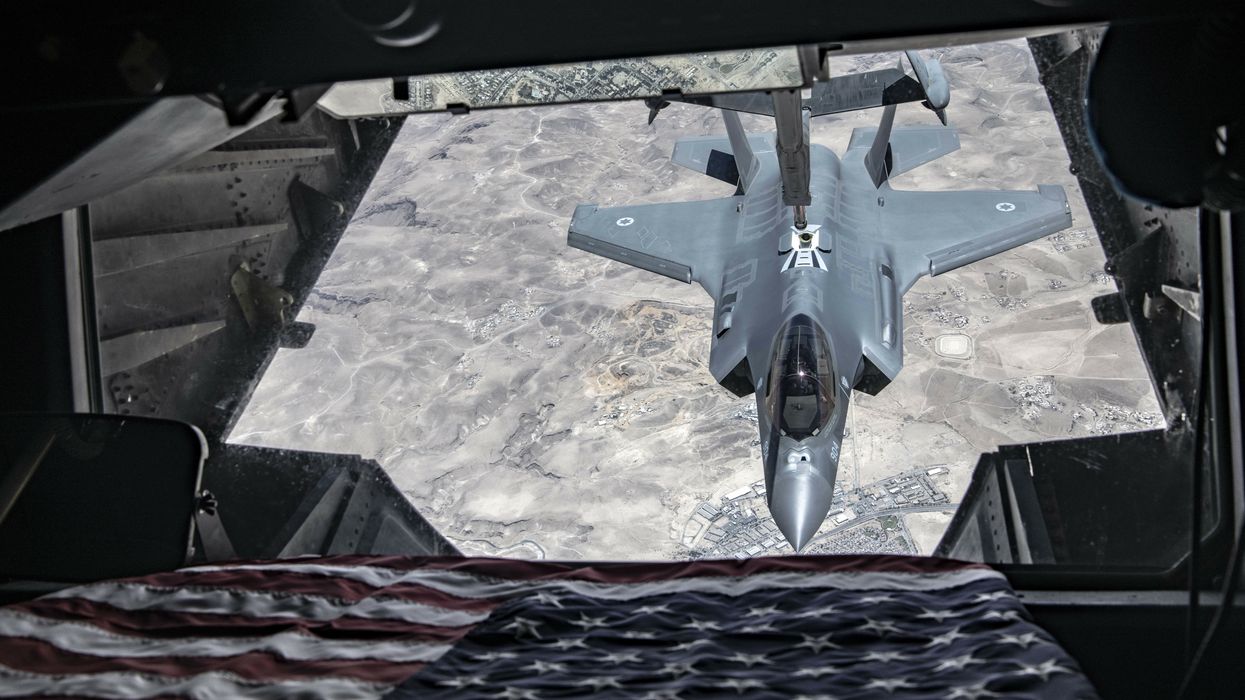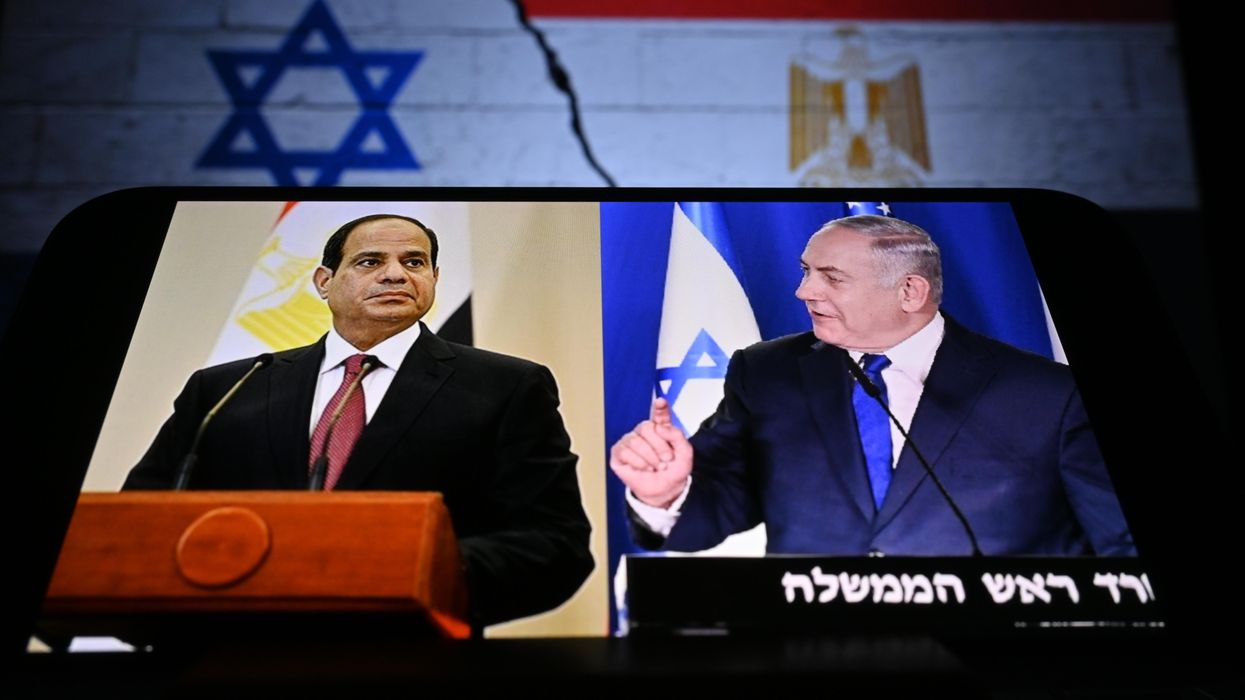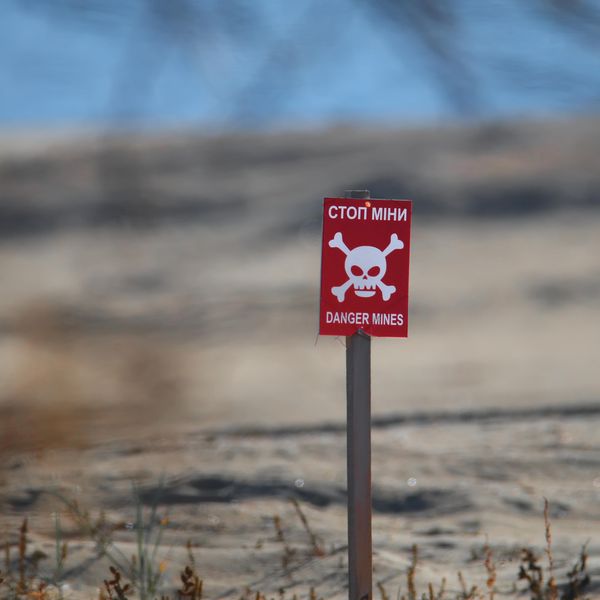As the U.S. sends THAAD, one of its most advanced anti-missile systems — along with 100 U.S. troops to crew it — to Israel, the signals are clearer than ever that Israel intends to strike back at Iran for its October 1 missile attack.
Whatever the Israeli response, their chosen target set may reveal whether their intent is retribution or something more. We may be able to discern Israeli strategic intent by classifying five general categories of targets in order of escalating magnitude. What they hit should tell us what they aim to do.
Eye for an eye: Restore deterrence through retribution
Israel can attempt to restore deterrence and symbolically punish Iran by doing a one-time strike to destroy a target of limited significance. They may choose to focus on such a target to demonstrate their resolve, for both domestic and international audiences. This kind of target highlights the Israeli ability to put any place at risk and sends an unmistakable message to Iran: now, we’re even. Limited targets could include an important oil rig, a warship, a radar site, or a key command and control center. Executing such a strike would be a relatively simple endeavor for the IDF using a small number of assets at a time of its choosing. Such an attack might be telegraphed well in advance to reduce civilian casualties in the manner that many have speculated prior exchanges have been discretely advertised between these adversaries. This type of attack is the least escalatory of potential Israeli responses and the least resource-intensive.
This would be a limited effort on Israel’s part using anything from a few long-range weapons launched from outside Iranian airspace to a one-time strike involving a few fighter aircraft. The IDF is very well situated for this type of strike.
Break the blade: Deny capability to project military power
Beyond a limited target set, Israel might choose to deny Iran specific military capabilities. This would require a more substantial effort by the IDF, with the dedication of more resources and possibly multiple days of strikes into Iranian territory. In this type of campaign, the IDF could target those military assets that place Israel at most risk: missile batteries, drone sites, submarines, and airfields.
This campaign could be expanded to military garrisons, logistical supply routes, and select elements of the Iranian military industrial complex. Destruction of these locations would degrade Iran’s capability to project military power over Israel and its neighbors. While this is more escalatory than the previous target set, it still shows some restraint as it only impacts military capability.
To accomplish the destruction of such a target set, the Israelis would most likely involve a significant portion of their Air Force. Fighter aircraft such as the F1-5I and the F-35 would penetrate Iranian airspace and use precision weapons, like JDAM, to takedown the targets. This would look like a more traditional air campaign.
Hit them where it hurts — the pocketbook
Symbolic and military targets only tangentially damage the Iranian state system, and the effect is often transitory. Missiles are replaced, airfields are rebuilt, and radar sites are relocated. Should the IDF seek to cause more lasting damage to the integrity of Iran’s fabric as a state they could choose an economic target.
By attacking economic targets, the IDF would seek to make ongoing financing of Iran’s regional aggression more costly, reduce confidence in Iranian leadership, and cause disruption across its entire society. Destruction of key ports, oil fields, and oil transfer facilities would degrade the key financial drivers of Iran’s economy; damage to these infrastructures would impact capital flows, jobs, imports and exports, and the availability of goods to its citizenry and soldiers.
Unlike other methods of disruption, physical destruction of infrastructure has a longer consequential effect. Furthermore, the Israelis could create greater friction in Iran’s economic system by targeting key transportation infrastructure components such as railways, bridges, and highways. These assets could be destroyed with lesser risk to civilian casualties, with a simultaneous maximizing disruption to the county’s general economy.
Attacking this target set would be a significant step and a clear signal of Israeli intent to escalate the conflict with Iran and could equate to a declaration of war. The IDF would also rely on its Air Force to hit this target set. Fighter aircraft would have to carry larger class explosives, such as the GBU 31, a 2,000-lb class precision bomb, to ensure destruction of hard targets such as bridges. Weapons with delayed fusing would be needed for port facilities and to crater roadways and rail lines. In addition, the IDF may choose to use assets on the ground in Iran for acts of sabotage.
Cut off the head of the snake or pull its fangs: eliminate the levers of regime control
While hitting economic targets is a significant step on the escalation ladder, the next rung would be a substantial move toward general war. The Israelis could choose to hit targets that either destabilize or possibly remove the Iranian regime.
The Iranian government maintains tight reign over its citizens through primarily two means: communication and control. There are a variety of targets that would degrade the government’s ability to maintain this control. These include the leadership and infrastructures of state-run media outlets, government centers, and the Islamic Revolutionary Guard Corps (IRGC).
The most appropriate focus of these targets is the IRGC because degrading it would impact both Iran’s military and population control capabilities. Importantly, destroying the tools enabling the Islamic Revolutionary government to maintain control over its population might be as effective in ending the regime as targeting the individual leaders themselves. These types of strikes, however, would present an existential threat to the current Iranian leadership and would be on a direct path to a more general war.
There would be a wide variety of Israeli assets used to degrade the regime control targets. Reconnaissance assets would be needed to track real time movements of key leaders. Large strike packages of aircraft with a variety of weapons would be needed to destroy IRGC garrison sites. Overall, this would be a sustained effort involving a cross-section of capabilities.
There can be only one attempt to destroy its nuclear program
Lastly, the IDF could target Iran’s emerging nuclear program. For over a decade, many have speculated that this is the Israelis’ primary goal. While eradicating Iran’s nuclear capabilities may make the biggest statement, it does little to change the war today. If the IDF destroys or heavily damages one or more Iranian nuclear program sites, the message is clear: Israel will do what it takes to suppress what it sees as Iran’s existential threat to its existence and achieve long-term stability in the region.
These actions clearly define Israeli long-term intent by using the current fight with Iranian proxies to go beyond leveling the playing field and remove any potential nuclear threat. It also sets the stage for Israel being the only country in the region with nuclear capabilities. Examples of this type of target include nuclear research facilities, missile construction sites, and nuclear fuel processing locations.
It is difficult to assess where this lands in terms of escalation but most likely would ensure the Iranians pursue their efforts to achieve nuclear weapons by whatever means they have remaining or whatever options available.
Destroying the nuclear sites is the hardest problem for Israeli weaponeering. The IDF would need to penetrate Iranian airspace using manned aircraft in large, coordinated strike packages carrying large-class penetrating munitions. The timing of the strikes would be critical to ensure the weapons penetrated the targets in a coordinated fashion, with each weapon making a deeper hole for the next weapon.
While this is no small task, the IDF demonstrated their ability for such a complex attack when they hit the complex in Beirut with over 80 2,000-lb bombs in a coordinated strike that killed the Hezbollah leader Hassan Nasrallah.
Ultimately, we can anticipate they will select targets from the above options. Will a response be a return to the status quo while they continue their campaigns against Hamas and Hezbollah, or will it signal the beginning of a much wider regional conflict? The world wonders and the world waits.
- Iran bombs Israel, but buck stops with Biden ›
- Biden is letting Israel trap the US into war with Iran ›
- Who leaked US classified docs on potential Israeli attack? | Responsible Statecraft ›
- Rubio: 'We are not involved in strikes against Iran' | Responsible Statecraft ›
















